Artist Cove Q&A: James Cook
learn more about James Cook through dipity's monthly art interview spotlights
Introduction
James Cook is a British typewriter artist known for his intricate, text-based artwork created entirely using vintage typewriters. Originally from Essex and now based in London, James has spent the last decade perfecting his craft, producing over 350 artworks using more than 100 different typewriters. His work spans detailed architectural studies, portraits, and landscapes, with commissions for major brands, including Disney, Universal Pictures, and Netflix. James’s art uniquely blends technology and traditional artistry, often incorporating hidden messages within his pieces. His work has been exhibited internationally, and he continues to push the boundaries of what is possible with a typewriter. Through social media, he has built a substantial following, sharing insights into his meticulous process and engaging audiences worldwide.
Q: What is your name? Where are you from? AND What is your current title in the art world?
My name is James Cook. I am based at Trinity Buoy Wharf in London, United Kingdom, but I am originally from Braintree, Essex, which is 40 miles north of London. In the art world, I am recognized as a Typewriter Artist, a title that reflects my unique approach to creating art using my collection of vintage typewriters.
Q: How did your art journey begin? AND How long have you been at it?
My journey into art began in 2014 as a high school art project. My class was tasked to research artists throughout history who integrated technology into their work. I came across the work of American-born artist, Paul Smith. Born with cerebral palsy, his parents gave him a typewriter at a young age to learn to read and write. Due to his condition, he found it difficult to hold a pencil or pen, so was given a typewriter in the hope that the mechanical precision and ease of typing would allow him to excel in writing.
Paul had a passion and desire to make art, and by discovery found the mechanical precision of the typewriter gave him the ability to communicate and express a way of making art. Paul spent the majority of his life in care but continued his typewriter artwork. It was his story and seeing his incredible type-written creations which gave me the inspiration to give typewriter art a go for myself.
Since 2014, I have been creating typewriter art for over a decade. I celebrated “Ten Years Typing” which was an exhibition of my work last December in London and I am now into my eleventh year of typing. To date, I have created over 350 artworks and have over 100 typewriters in my collection. When I left high school, I trained to be an architect at UCL, but continued typewriter art as a hobby. It was only 5 years ago that interest in my work sky rocketed online through Instagram. I started to receive lots of enquiries to do TV work an was being featured in newspapers and magazines. I have been a full-time artist since 2021.
Q: What do you use to create your artwork on a day-to-day basis?
All my work is made with typewriters. I use a collection of over 100 vintage typewriters, each with different fonts, languages, and key arrangements, to create detailed portraits, landscapes, and architectural studies. On a daily basis, I work with various paper types, typewriter ink ribbons, and mechanical typewriters, carefully layering keystrokes to form intricate artworks.
To be specific, my go-to machine is a 1960’s German-made Olympia SG3. This is my “workhorse” and I use most often. It weighs 25 kg and is a real beast. I have 5 of them; one that fully works and the rest which I keep for parts, heaven forbid that it breaks on me! I also have some very rare machines such as the MusicWriter, a typewriter designed to write sheet music, so instead of letters on the keys, it has musical notes. I like to work outdoors so will take with me a portable machine. For this, I have a collection of 1970’s – 80’s Silver Reed typewriters which fit neatly in a backpack.
Q: How long does a typical artwork take you to complete? AND Describe your process.
Typewriter art is an incredibly time-consuming process and truly a labor of love. The time required to complete a piece varies; an A4-sized artwork can take about a week, while large-scale commissions or intricate cityscapes may take anywhere from one to three months. Commercial clients often have tight deadlines, sometimes requesting work to be completed within a week. Unfortunately, I have to turn down many projects unless we can negotiate a more realistic timeline. At best, I can produce three to four pieces in a month.
My process begins with a detailed reference image, which I print at a 1:1 scale to match the intended artwork size. I position this reference as close as possible to my typewriter for accuracy. Each piece is typed entirely by hand. I start by creating a light framework using an old, dry typewriter ribbon from a previous project to suggest the basic shapes on the page.
Once I’m satisfied with the composition, I commit to the drawing, building up layers of text using an assortment of letters, numbers, and punctuation marks to carefully construct the image. Typewriter art is a game of limitations. A typical typewriter has only around 45 keys, so the challenge lies in using those characters creatively to depict various subjects; whether a person, building, window, chair, or tree. Another challenge is the permanence of the medium.
Mistakes are irreversible, as I never use correction fluid. There have been times when I’ve spent two weeks on a piece, only to make an error that forces me to start over entirely. It’s a test of patience and precision, but that’s what makes the process so rewarding.
Q: What’s your favorite project you’ve ever worked on thus far?
It has to be the collab project with Robbie Williams—that is one of my favourites, to have such a music icon as Robbie contact me out of the blue asking to work on a project based on his collection of paintings was a real highlight for 2023. Any on-location project is always ones that I really cherish.
Also, working with The Royal Albert Hall, such an iconic London venue, is one that I shall never forget. In addition, I loved exhibiting my typewriter art in Taiwan back in 2023. This was with Tainan’s Chimei Museum; an impressive monumental gallery of western art, which from the outside looks like the Capitol Dome in Washington. This was for an exhibition called “Inside the Box: When Machine Meets Art” and featured a collection of my typewriters and artworks.
I was asked to visit and also present my work on the opening of the exhibition to their press and all the staff of the museum. It was such as surreal project. I had to pinch myself, I’d never been so far away from home before, I had never been to Asia, and so to be 6,000 miles away from home talking about typewriter art. It was deeply moving to be sharing my work on the other side of the world and it really put into perspective just how far, globally, news of my work has travelled over the last 10 years.
Two years ago, I had the pleasure of receiving a signed portrait of my typewriter art from Tom Hanks, also a collector of typewriters.
Q: Where do you draw inspiration from for your art?
I draw inspiration from architecture, travel, and historical landmarks. My background in architecture heavily influences my precise and structured compositions. Artists like Paul Smith and Where’s Waldo? creator Martin Handford have been major sources of inspiration.
I have a deep fascination with world landmarks, and in many cases, one project naturally leads to the next. For example, my collaboration with the Royal Albert Hall, where I was commissioned to create an artwork capturing the entire venue from the stage, led to a piece featuring The Ritz. That then evolved into an artwork created from the top of one of Battersea Power Station’s chimneys. These projects are bucket list moments for me as someone passionate about architecture, and having the opportunity to visit and create artwork for these iconic locations is truly a dream come true.
Architecture remains at the heart of my artistic practice. I like to think of each drawing as being assembled from a “kit of parts,” with letters, numbers, and punctuation marks serving as the building blocks. I am fascinated by how everyday architectural details can be deconstructed into their simplest typographic forms. I also enjoy weaving hidden messages into my work, incorporating concealed words and references. I have always been drawn to Wimmelbilderbuch, artworks filled with richly detailed scenes of people, transportation, and architecture. Martin Handford’s Where’s Waldo? books immediately come to mind as a major influence.
Q: Out of all your artworks, which is your absolute fave? AND Why?
My favorite typewriter art project has to be my meticulously detailed “typiction” of the Lower Manhattan skyline. Every artist has a bucket list of dream projects, and for me, this one is the ultimate achievement. It was an incredibly ambitious undertaking, and I was lucky to complete it just before the end of 2023.
New York celebrated its 400th anniversary in 2024, and to mark the occasion, I set out to recreate the Lower Manhattan skyline using my 1963 Olympia SG3 typewriter. Once finished just before Christmas, it became the largest and most ambitious artwork I have ever created. Measuring 1.2 meters wide by 1 meter in height, the drawing took me over three months to complete which is roughly 400 hours of work, typing for six hours a day, five days a week. For those who appreciate the technical side, that equates to typing at 40 words per minute, using five typewriter ribbons to bring the piece to life.
What makes this project my favorite is not just its scale but also the meaning behind it. The artwork contains more than one million individually hand-typed letters, numbers, and punctuation marks, puzzle-pieced together to form an accurate representation of Lower Manhattan. I also wove in hidden details such as street names, coffee shops, and local businesses whch are familiar landmarks to both tourists and lifelong New Yorkers. Watching people examine the artwork up close, searching for these hidden messages, is one of my favorite aspects of creating typewriter art.
Q: Are there any exciting upcoming projects or events you’d like to share with us?
Yes! I am currently working on a book that has been a long time in the making. For over two years now, I have been developing Authors in Type, a collection of more than 50 typewritten portraits featuring both contemporary and classical authors. For example, Shakespeare, Jane Austen and Judy Blume to name just a few.
What makes this project particularly special is the way each portrait is constructed. Not only capturing the likeness of the author but also embedding hidden messages within the artwork. These typewritten details include references to the author’s life, the themes they explored, and the titles of their most celebrated works. It’s a way of paying tribute to these literary figures while also inviting viewers to engage more deeply with the artwork, searching for the concealed words and phrases woven into each piece. I am aiming to complete the book by July this year, and I’m incredibly excited to finally bring it to life after years of planning and meticulous work!
Q: What are some fun facts about yourself or hobbies that you have outside of art?
I’ve always been into cars, and it runs in the family. My uncle and granddad both raced Mini Coopers in rallycross, and my dad still owns a classic 1960s Mini Cooper. My first car was a 1970s Mini Clubman, and I’ve been trying to buy it back—but without much success.
I sold it ten years ago and recently did some detective work to track it down. It’s still with the same owners, sitting untouched in a garage in South London. Initially, they were open to selling it, but after our conversations, I think I may have unintentionally reignited their interest in the car. So, for now, the trail has gone cold. I regret selling it. That car holds so many great memories—driving around with my mates, and not-so-great ones, like breaking down in the pouring rain. I should have never let it go. These days, I drive a Smart Brabus Roadster, which I’m currently tinkering with to sort out all of its issues.
Q: What was the last song you listened to?
The last song I listened to was “It Gets Funkier” by Vulfpeck. I love Vulfpeck.
Q: What’s one movie or book that we should check out?
I love Napoleon Dynamite (2004)—it’s a cult classic! I’ve met Jon Heder, who played Napoleon, and he has an original typewriter art of Napoleon which I gave to him at a Comic Con back in 2016.
Q: How do you typically get out of artist block?
That is a difficult question to respond to. I don’t actually get artist block that often. I think because my output is so small in terms of what I am physically capable of producing within the space of a month, I have enough time to think and reconsider ideas. If I do get artists block, I find that stopping work and switching over to another project for the time being can help rather than forcing yourself to think of the idea.
Q: Lastly, what advice or tips would you give those wanting to pursue art as a career?
“Go slow to grow” is my advice. Start small, and don’t rush the process. You don’t need to have everything figured out from the beginning. It has taken me 10 years. Creating typewriter art is a slow process, and whilst the drawing process is slow, equally I believe that the success of the business lies with the slowness of its marketing, global appeal and business growth. Social media has been instrumental in my growth, allowing me to share the process behind each piece. From the intricate act of typing each line. It’s a rhythmic, methodical process that draws people into watching the videos that I publish. Some will stay and watch the video on repeat to spot hidden messages that I have typed into my drawings.
To Check Out More of James Cook’s Work Visit:
Instagram: @jamescookartwork
Website: www.jamescookartworkshop.com
Any other thoughts, comments, or shares after reading the interview?
[Interview Processed By VFORROW]
Thank you so much, James Cook, for sharing and submitting to Dipity Lit Mag! ~ Jazz Marie Kaur (Vevna Forrow).
We appreciate anyone who takes the time to comment, subscribe here, pledge support to our Substack, donates directly to help fund future community projects on our website, visits the gift shop, or buys us some pizza slices over there. Stay tuned for more Substack shares and interviews. Thanks again for your support and have awesome days ahead!


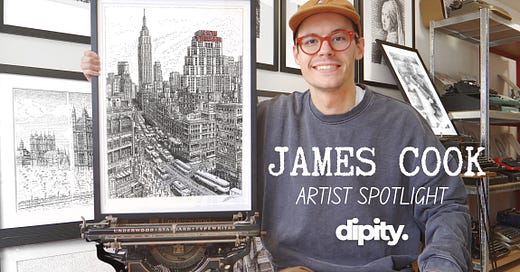



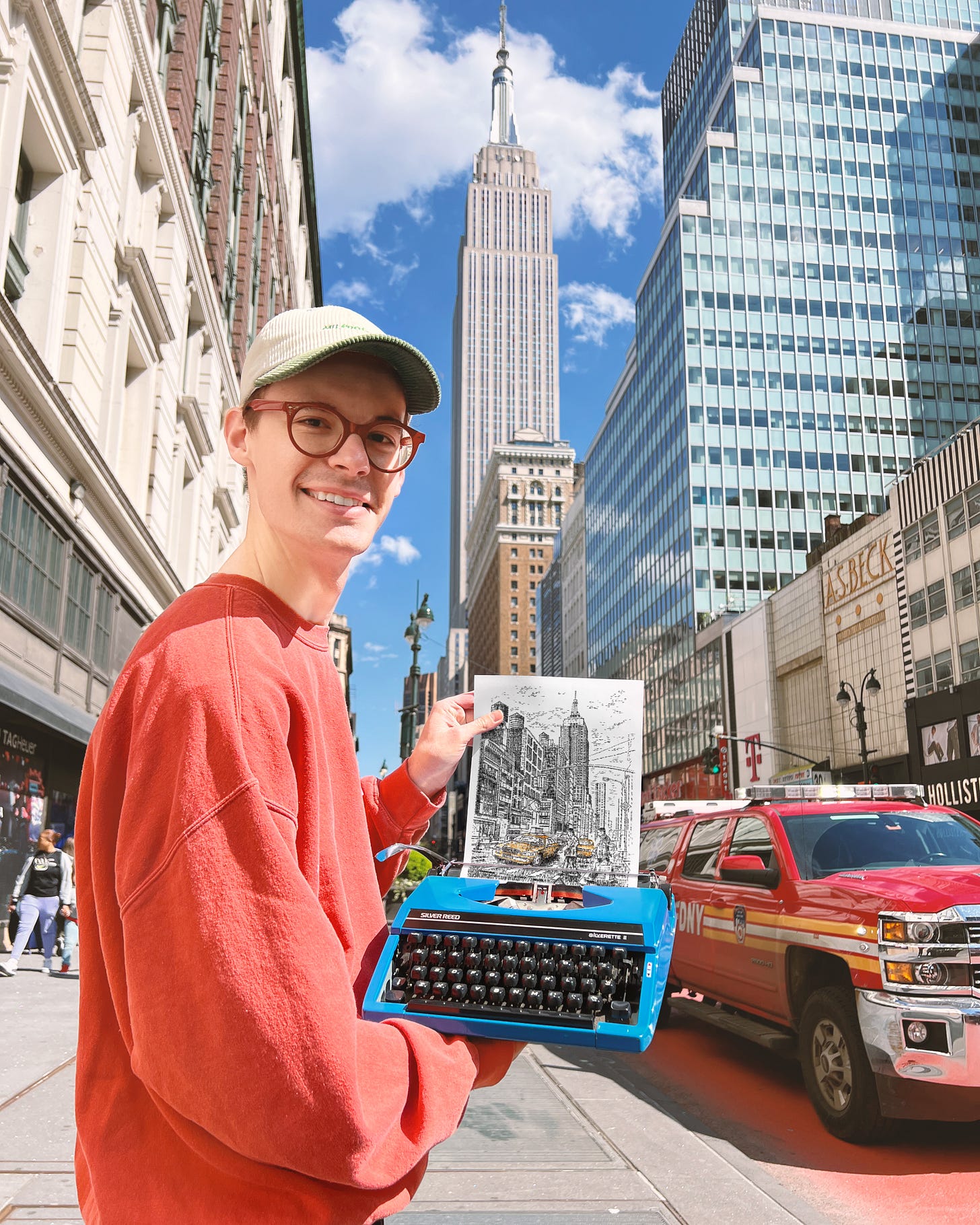
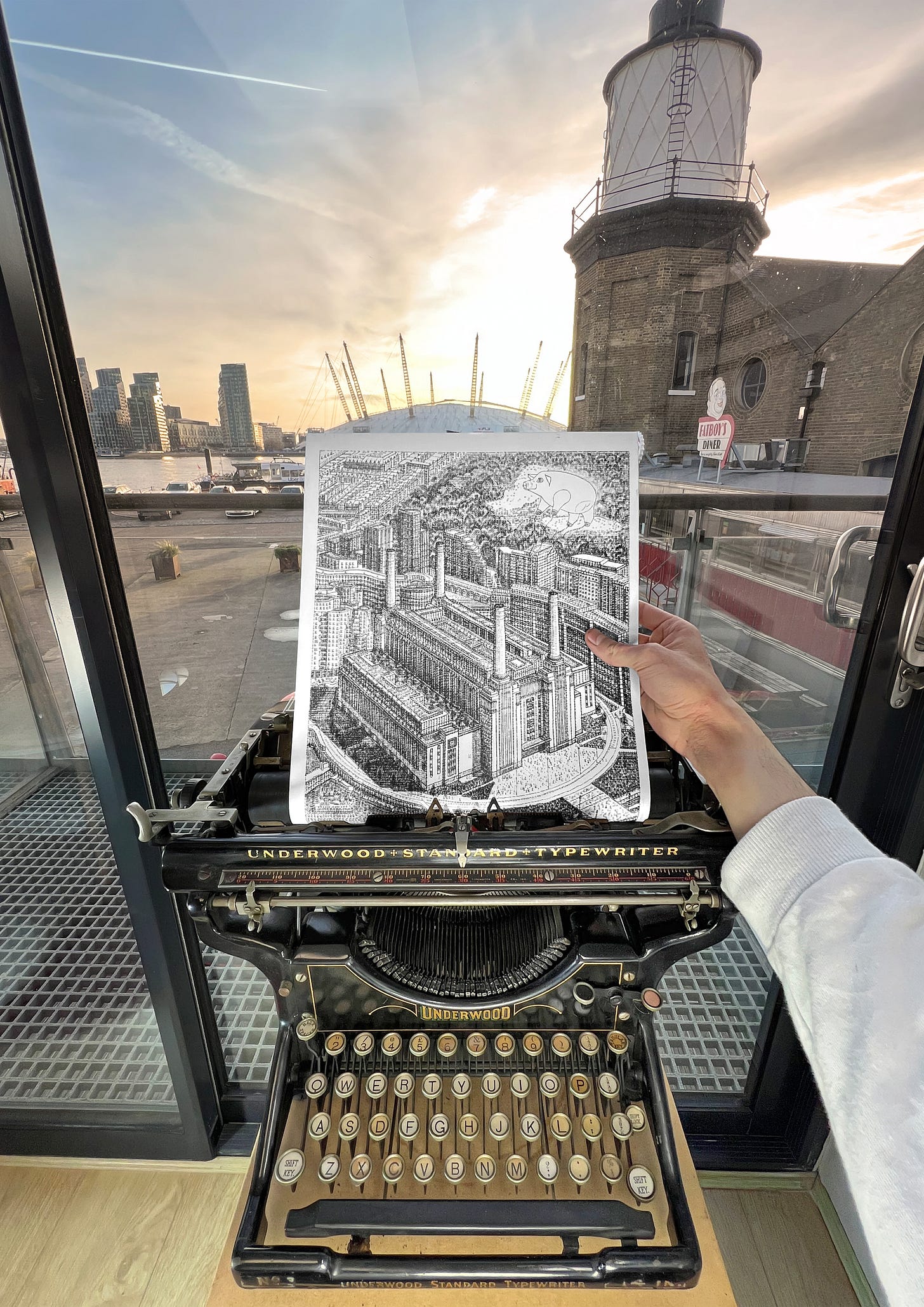
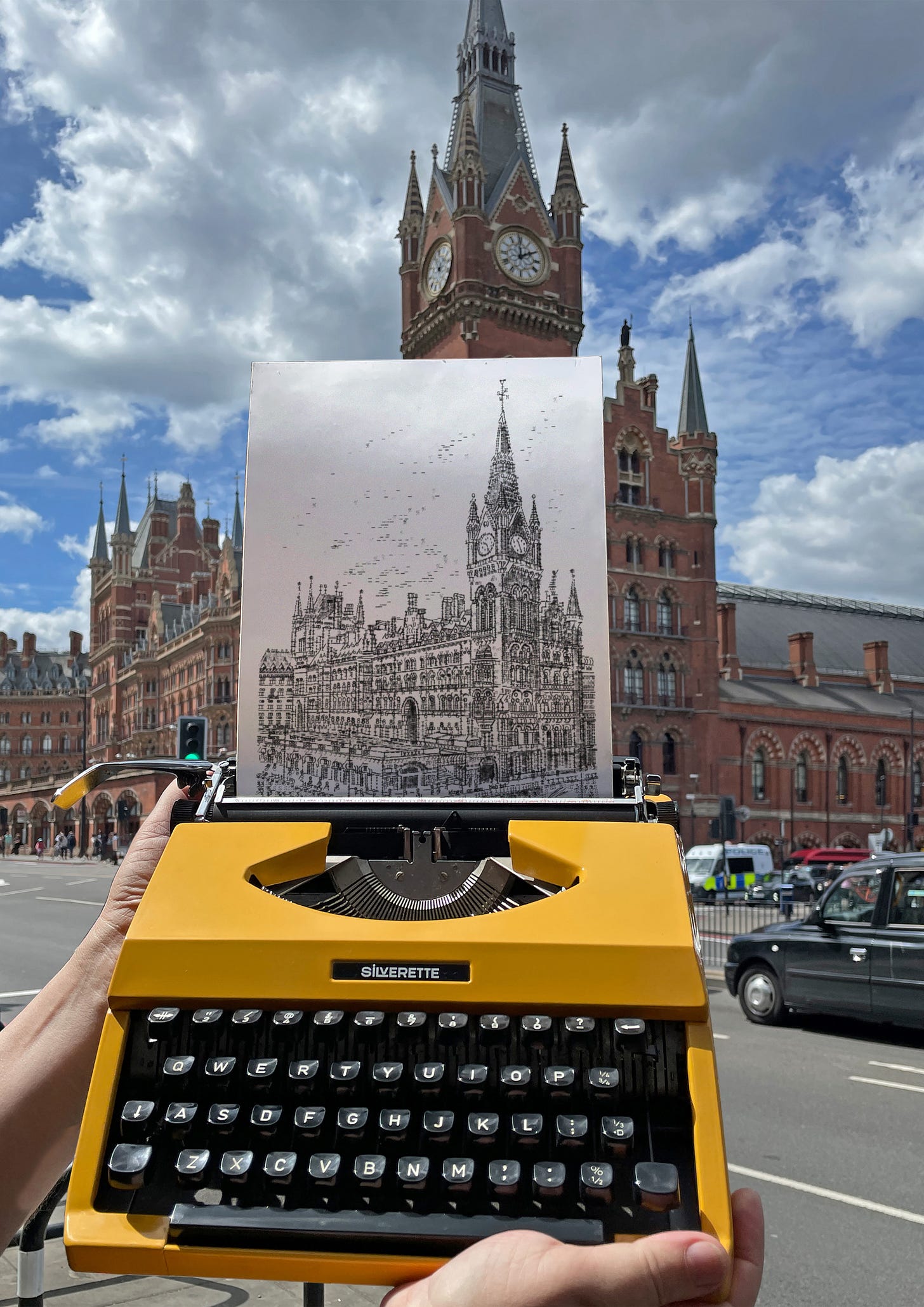

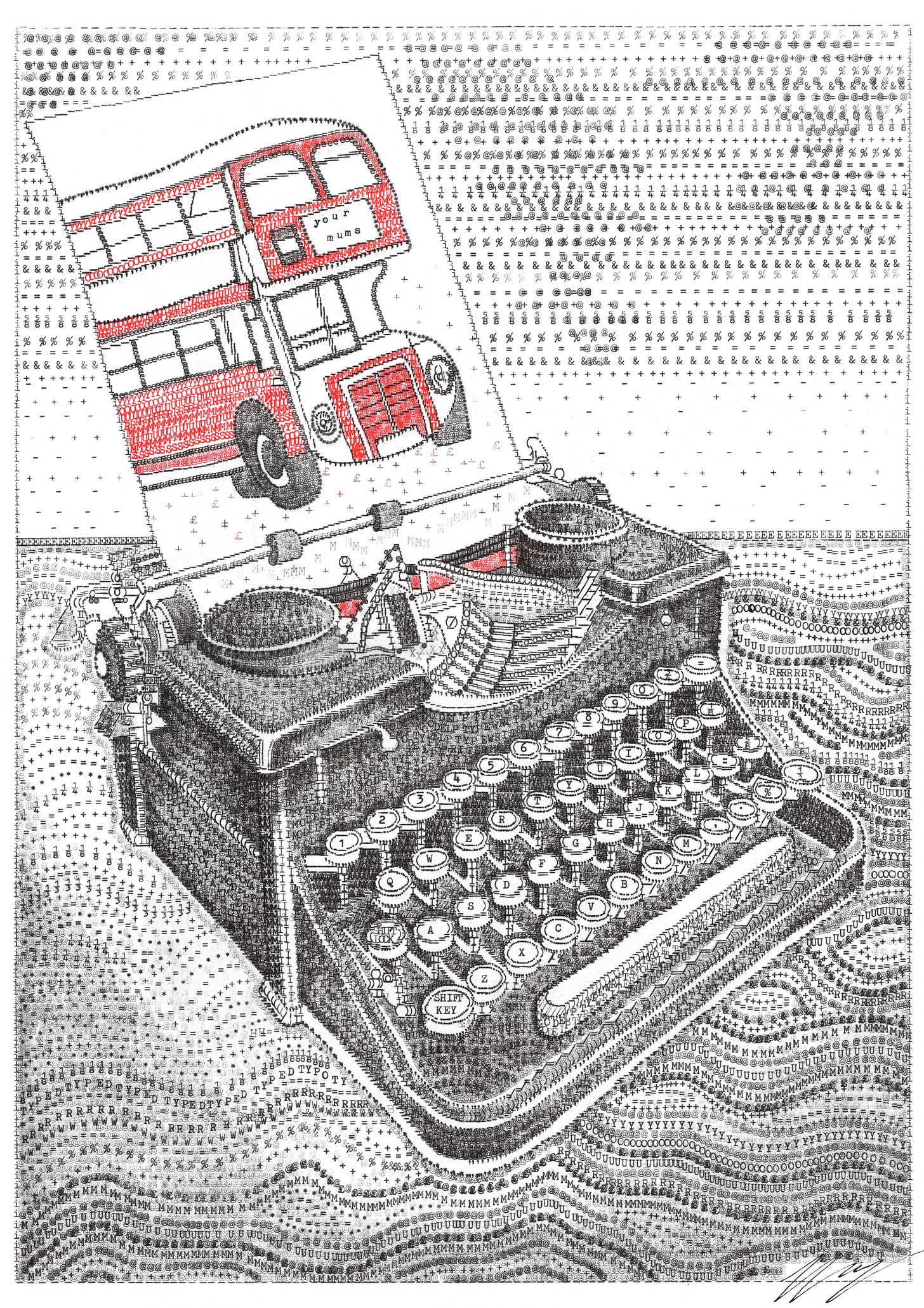
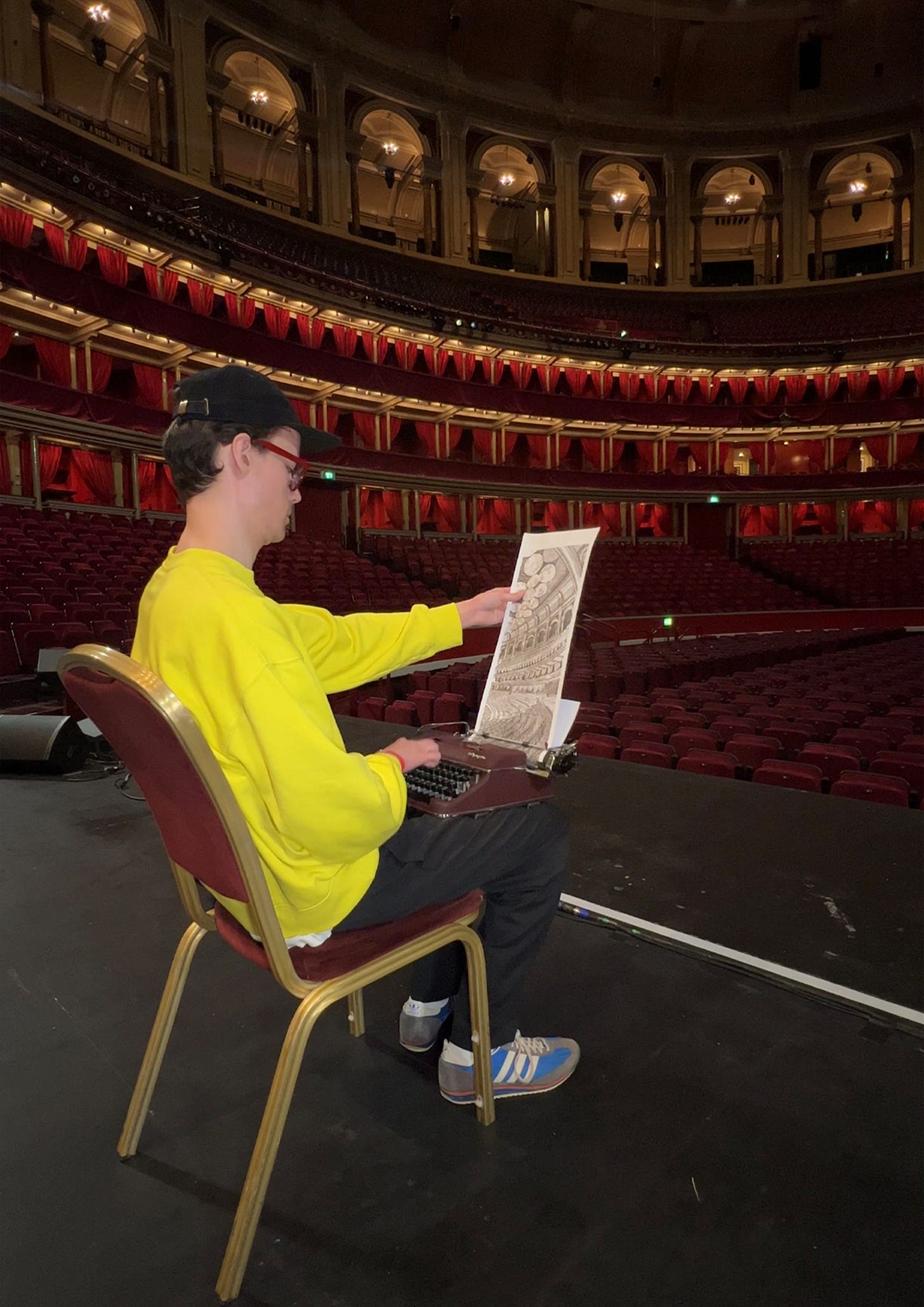
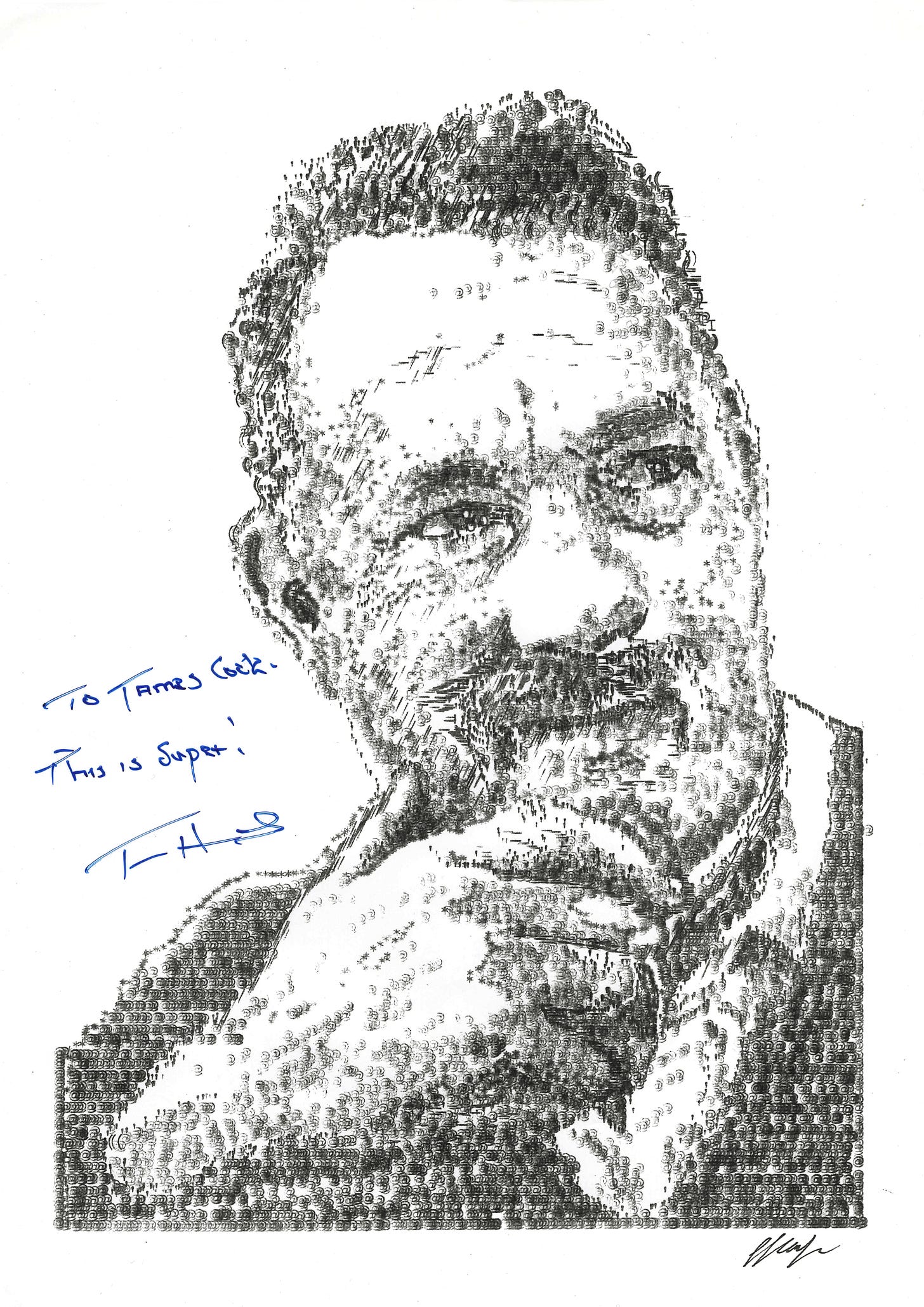
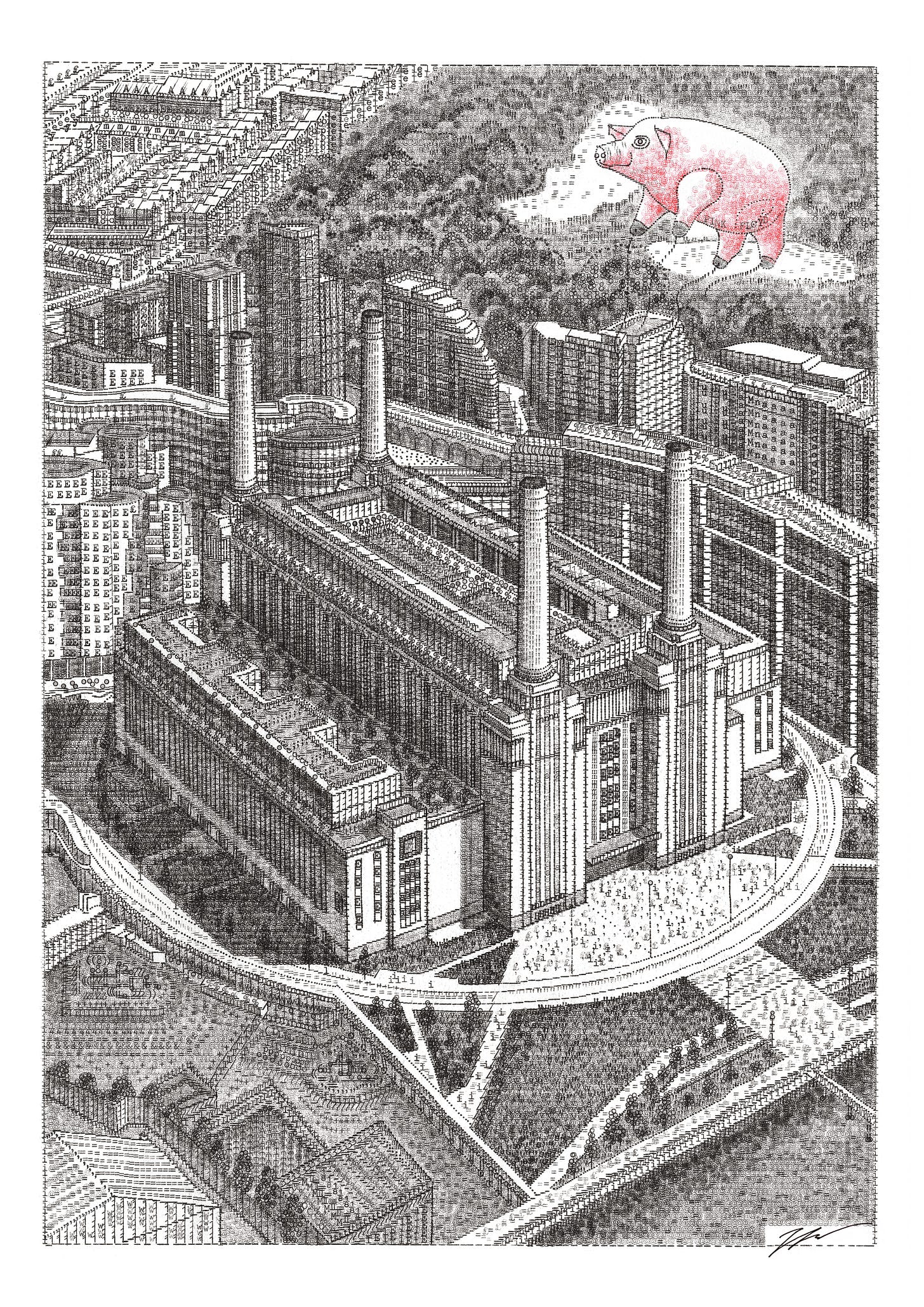



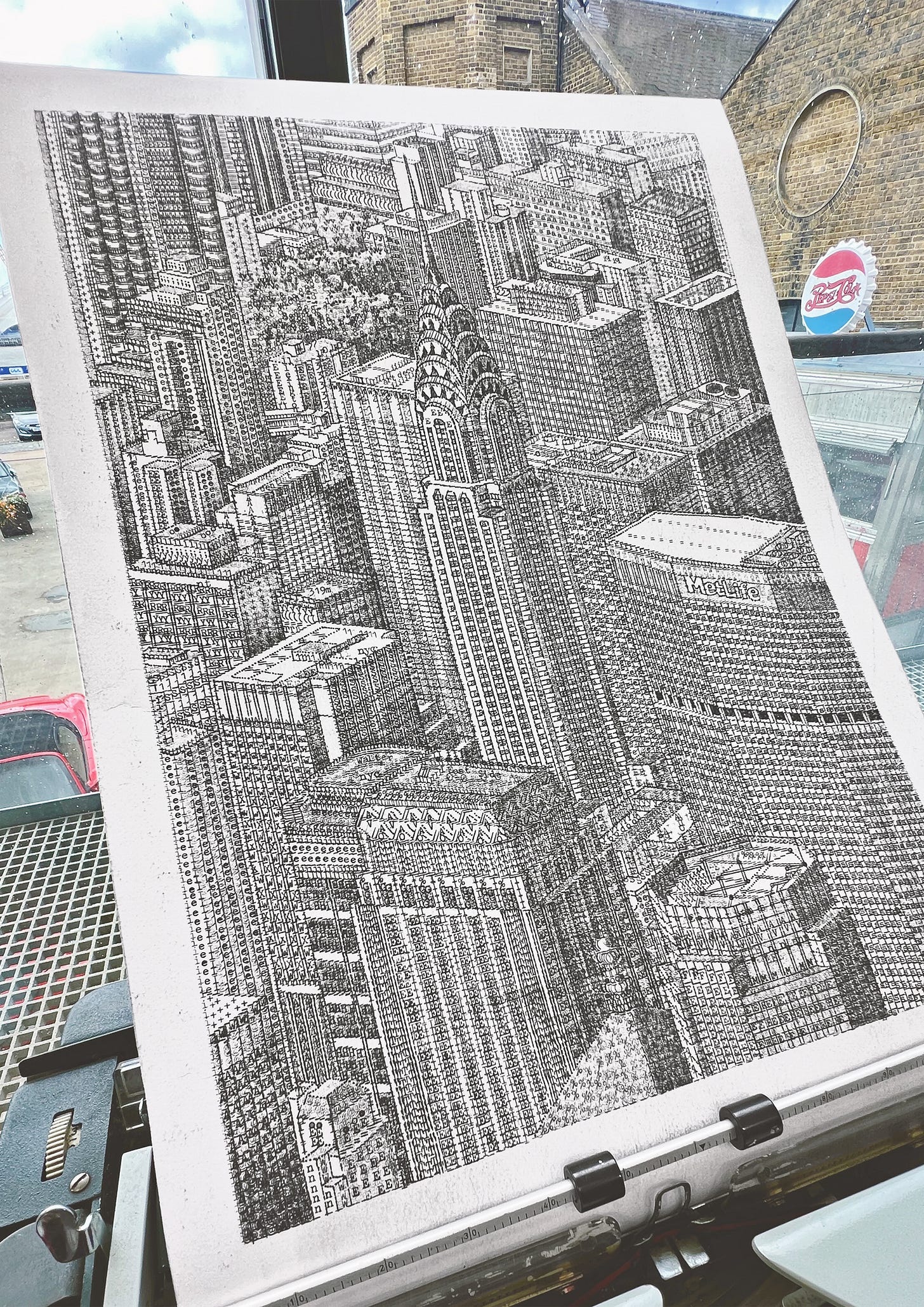
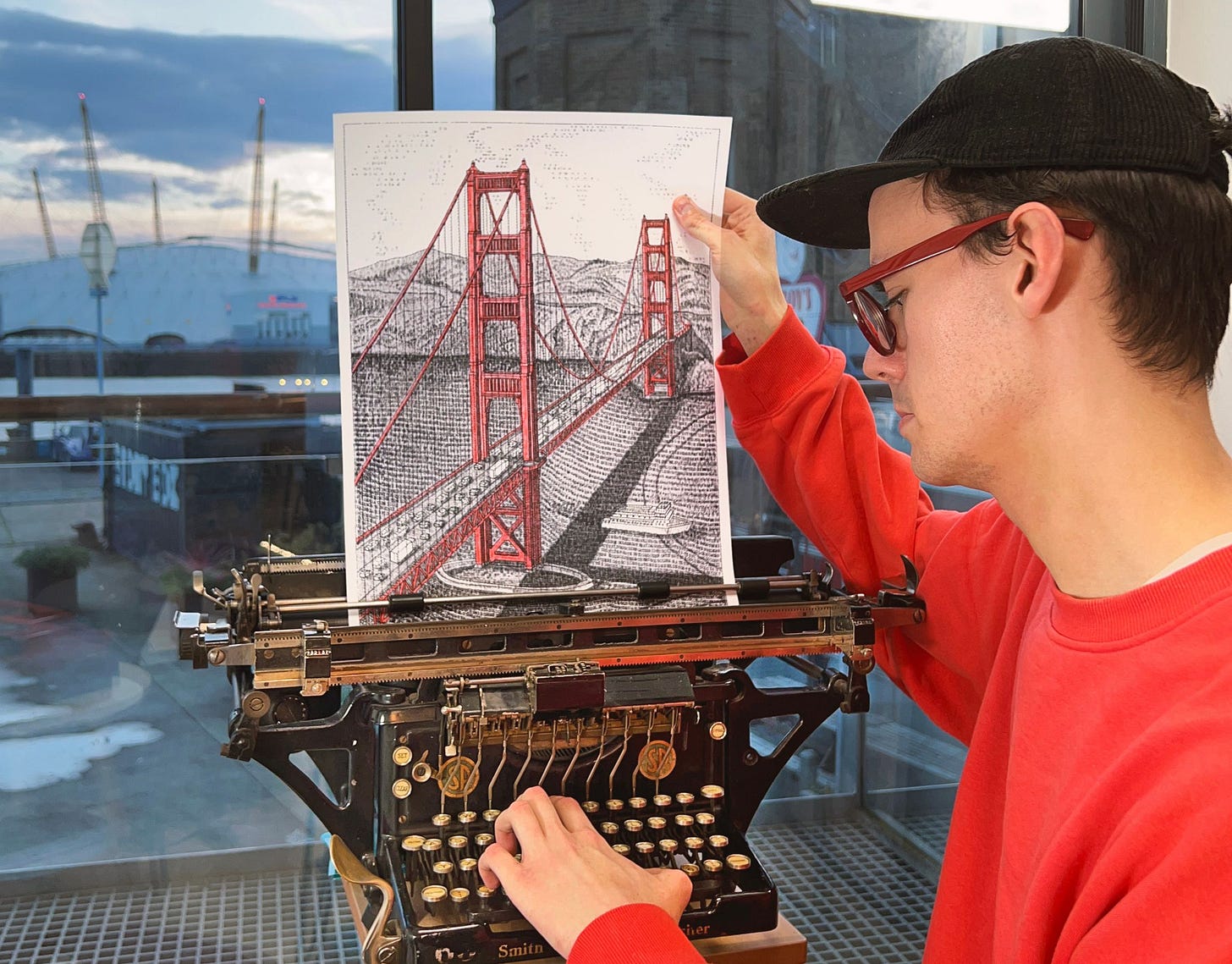
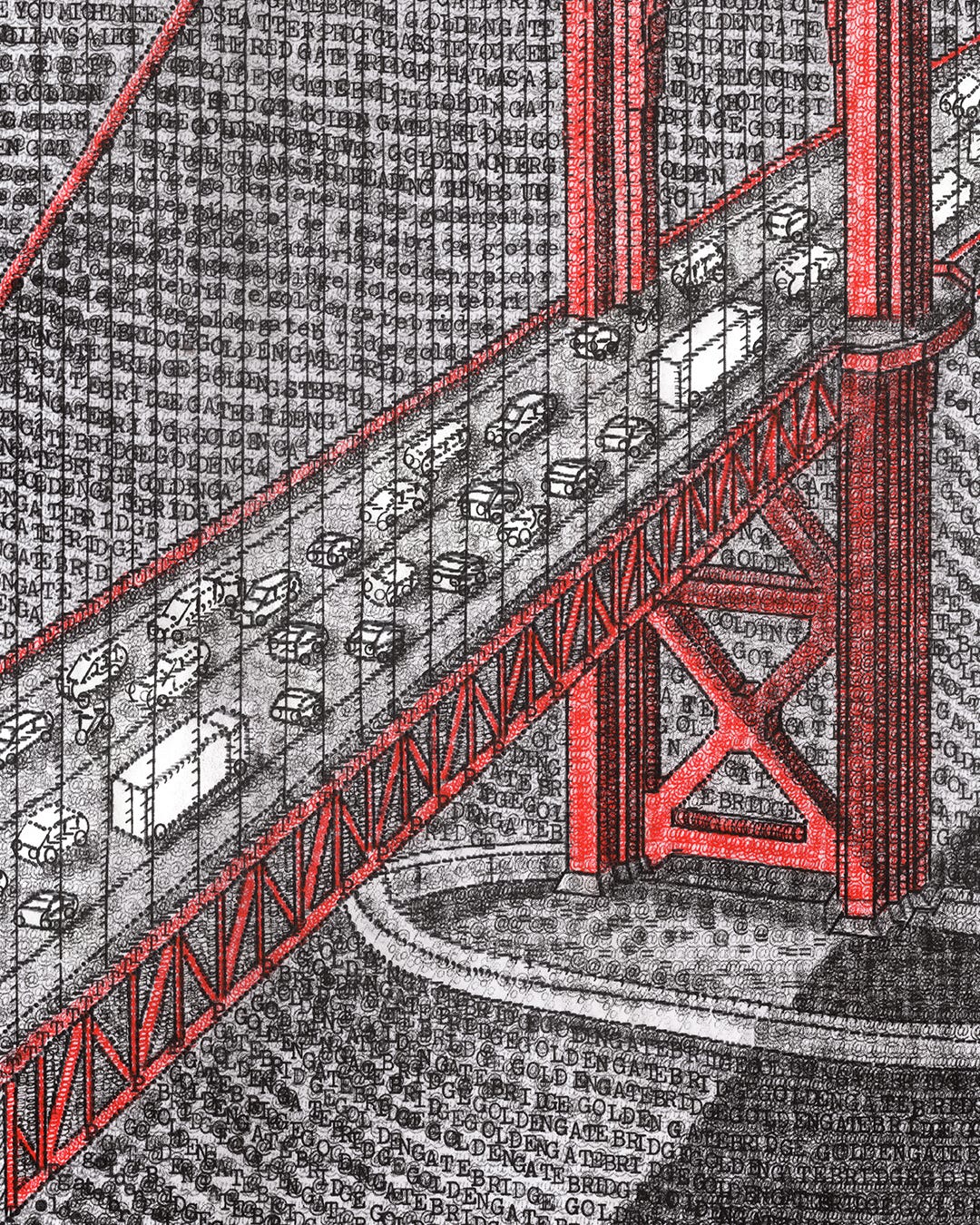

This is some wild stuff. Much respect!